University of the Arts - Philadelphia
Paradigm Lecture Series • Connelly Auditorium • 1:00 - 2:30pm
Terra Hall
211 S Broad Street
Philadelphia, PA 19107
CLICK HERE for more information
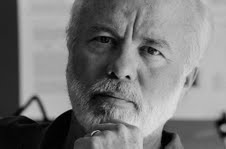
Paradigm Lecture Series • Connelly Auditorium • 1:00 - 2:30pm
Terra Hall
211 S Broad Street
Philadelphia, PA 19107
CLICK HERE for more information
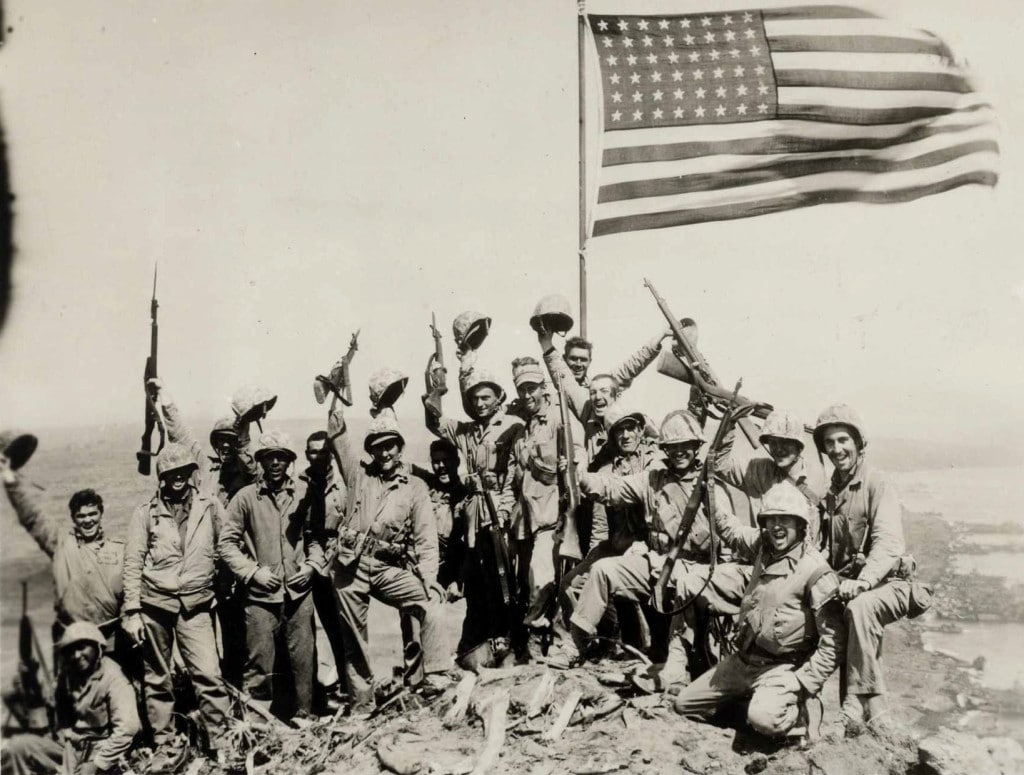

Joe Rosenthal's photo of U.S. Marines raising the flag over Mt. Surabachi on Iwo Jima, Feb. 23, 1945 (Rosenthal/AP)

Marines hit the beach under heavy fire on Iwo Jima. Joe Rosenthal made several of these landings and lived to tell about it. (Rosenthal/AP)

U.S. Corpsmen carry a wounded Marine on a stretcher to an evacuation boat on the beach at Iwo Jima while other Marines huddle in a foxhole during invasion of the Japanese-held island of Iwo Jima (Rosenthal/AP)

Joe takes a photos of the Marines with the raised flag. Because of his diminutive stature, Joe had to stand on sands backs to get the shot! (AP)

U.S. Marines after raising the flag on Iwo Jima. At the time Joe Rosenthal thought this was his best shot before he realized he had captured the iconic raising of the flag. His comments to a reporter about "posing the picture" were misinterpreted to mean this one, not the raising itself. He did not influence the actual flag raising itself, that would have happened whether he was there or not. (Rosenthal/AP)
Today is the 70th anniversary of “The Shot.”
We all know that picture, the one in which, with the click of a shutter, Joe Rosenthal composed the Gettysburg Address of photography. His magnificent moment of U.S. Marines and a Navy corpsman raising the flag on Iwo Jima stands above all others to hang forever in our hearts.
But many other pictures Joe took during the fighting in Europe and through five Pacific campaigns will hold up over time as well.
Like the men he covered, Joe put his life on the line. He said that during his first landing on Iwo Jima the enemy fire was so intense that “not getting hit was like running through rain and not getting wet.”
Joe kept sprinting back to the action, to the danger, even though as a civilian combat cameraman he didn’t have to. It’s hard to comprehend that someone who had hit beaches under fire and witnessed its toll would return to that hell time after time. But, like most men of his era, Joe believed that heroism was no big deal, merely business as usual–and he knew his business. When he could he got names to go with faces, because that sold papers.
Joe Rosenthal’s combat photos consistently show a master at work. He may have had to lug around a 4 x 5 Speed Graphic (and working with one sheet of film at a time meant no “safety” shots), but he got it done. His photographs show the action, the quiet moments, the detritus of death—the disparate elements that comprise the tableau of war.
On Peleliu Joe saw Marines passing comrades covered by impromptu shrouds. Each looks down at the stretchers, as if wondering whether he knew either man. The image seems to illustrate an acceptance that this is how things were, and how the next day they could be lying there.
Joe Rosenthal taught me that some of the best photos happen not while battles rage but at their periphery—advice that stayed with me to great effect as I was photographing the Vietnam War. One of Joe’s strongest images, of a Marine chaplain and congregants at Mass, illuminates the humanity and spirituality of combat-weary men.
A photo he took on a troop transport of men boxing is a classic of a different sort: soldiers crowd around to watch compatriots beat each other up—a metaphor for the battles they’re all heading toward.
Joe had a career after the war, and took plenty of superb photographs. But overshadowing everything he did is that iconic frame freezing forever the gallantry and bravery of a few good men on a hill oh so far away. Their faces are obscured; the focal point is the act, not the personalities—these days a rare phenomenon.
This image will ring through the ages alongside the work of Mozart and Rembrandt and Hemingway. Joe captured the heart and soul of what it means to be a Marine in a picture embodying the essence of Americans. His photo is the symbol of freedom, and the man who took it, a son of immigrants, represents us all.
Joe was a modest guy. Until his death on August 20, 2006, the most prized possession in his spare San Francisco apartment was not, as you might imagine, a print of his greatest photograph. Instead, on the wall above his favorite chair hung a certificate:
“The Commandant of the Marine Corps
Takes pleasure in presenting the title
‘Honorary Marine’
To Joe Rosenthal
‘For unyielding devotion to Country and Corps’
12 April 1996
Joe Rosenthal. Honorary Marine. Great photographer. We who knew him will remember that modest, wonderful and beautiful friend. He will never be forgotten.
(This from a piece I wrote for WWII Magazine about Joe in 2012)
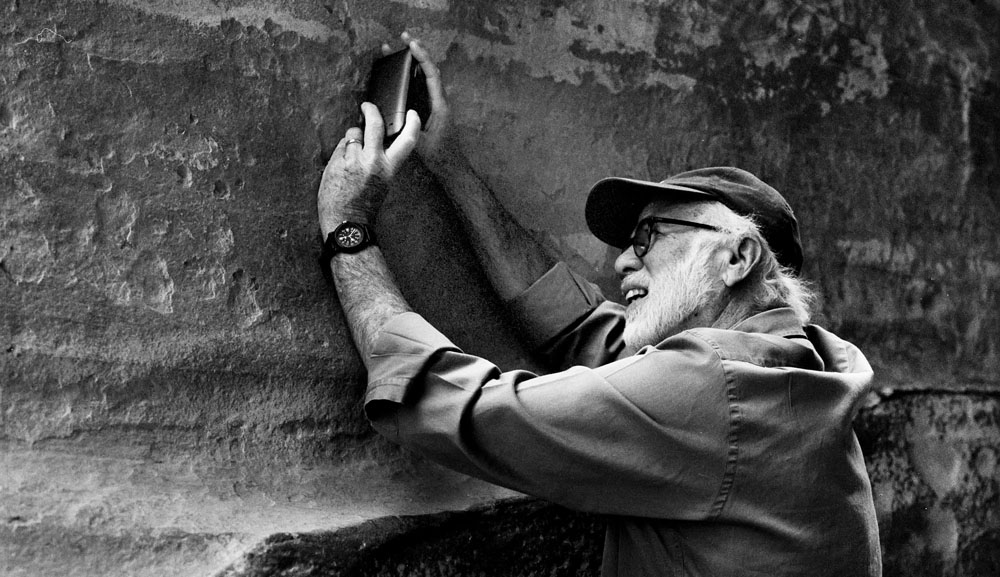
EXCITING NEWS!
The response to David Hume Kennerly On the iPhone has been so overwhelming that the First Edition is nearly sold out. Here's an update:
• The Second Edition is on its way, so if your books are backordered, you should get them in time for the holidays. And you can order any time from your local bookseller, Barnes & Noble or Amazon, knowing that your books are coming soon.
• Or, if you just can't wait, a limited number of books are still available directly from the publisher, Goff Books. CLICK HERE to order your copy today.
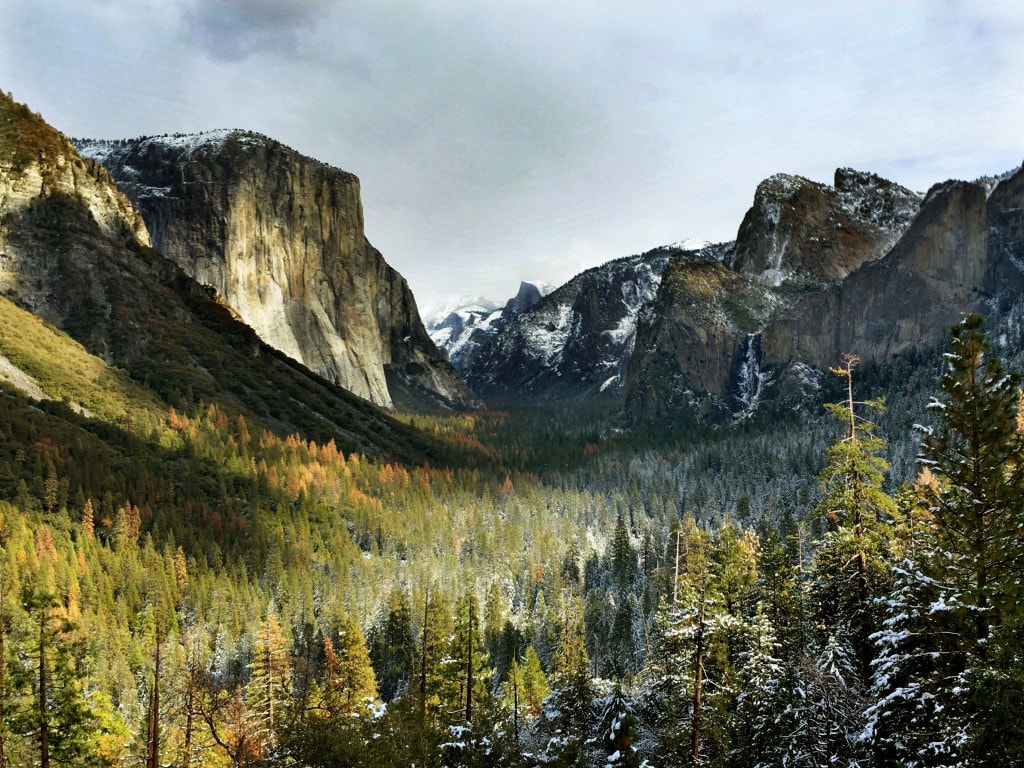
WHO IS IN GRAND RAPIDS THURSDAY NIGHT?
Besides me, that is... Come on out for my talk for Norman Camera
|
SEMINAR PRESENTED BY CANON EXPLORERS OF LIGHT PROGRAM DECEMBER 4, 2014 6PM-9PM AT CALVIN COLLEGE PRINCE CONFERENCE CENTER SPACE IS LIMITED!! CALL NORMAN CAMERA'S GRAND RAPIDS LOCATION AT 616-954-9920 TO RESERVE A SEAT OR SIGNUP ONLINE. |

In 2013, I challenged myself to take one or more good photos each day during the course of the year. I wanted to get back to the basics of telling stories with a camera, so I pared down my formidable photo arsenal to a simple instrument: the iPhone 5s. I made that choice because it is easy to use, always in my pocket, and simple. (I think of it more as a camera with a phone built in!). Shooting with its fixed 33mm lens forced me to sharpen my eye, get closer to and more observant of the little things around me, and ultimately made me a better photographer. To accomplish this I had to reach deep inside to see what I could really do, even on days where everything around me seemed extraordinarily ordinary. Days like that test my creative vision, but the trait that keeps me in the game is curiosity. I really do wonder about what's around the next corner, or in that shadow down at the end of the street. It's part of what keeps me fresh and excited about getting up everyday to see something new, even if it's only in my own backyard!

This photo of me taking a picture with an iPhone in Petra was by son James Kennerly using a Hasselblad and black & white film. It appears that not everyone is using digital these days, but he is definitely in the minority!
The result of my photographic adventure was not at all what I had initially intended. Although I drew from my picture-a-day concept for the book's illustrated material, what emerged was a very personal dive into understanding and articulating my own photographic process. "David Hume Kennerly On the iPhone" turned out to be a great way for me to share ideas about key elements of good photography with others.
More photographs have been taken in the last year than had ever been taken before in history. All of those people who are taking pictures are doing so for a reason; to remember something, to share an emotion or just to say, "I was there". "David Hume Kennerly On The iPhone" is filled with secrets and tips that can help others make those pictures more effective and memorable.
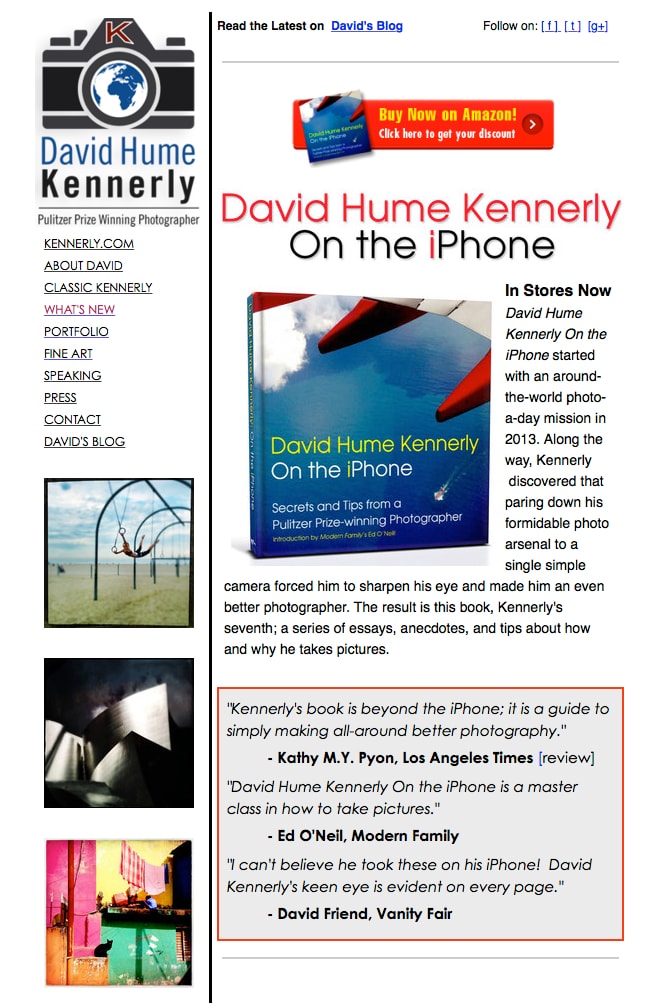
Kennerly's seventh book and first peek into his photography process is available in bookstores and online NOW
SEE what all the buzz is about --
READ Kathy M.Y. Pyon's rave review in the Los Angeles Times
WATCH David share some tips from the book on Good Day L.A.
LISTEN to David on Rudy Maxa's World on radio stations across America

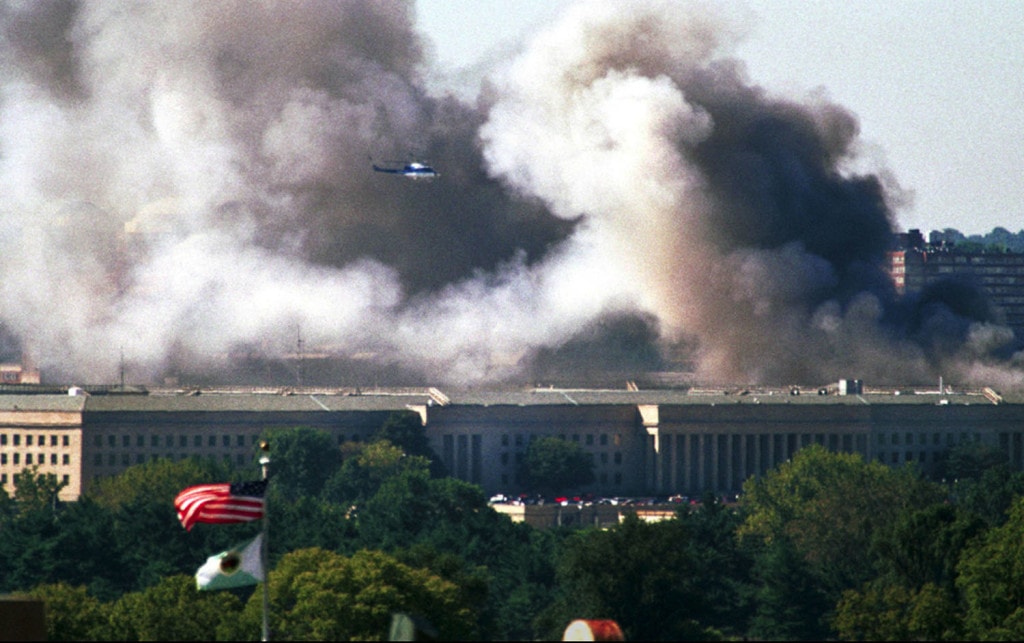
The evening of September 10, 2001 I was having dinner with Vice President Dick Cheney and his wife Lynne in the VP residence. They were old friends from the President Ford days when I was the head White House photographer, and Dick Cheney was deputy chief of staff, then the chief after his boss Donald Rumsfeld became Ford's Secretary of Defense, (the youngest ever). Cheney and I probably spent more time with the president than anyone outside of his immediate family, and had become close during those days. We made all the trips, rode in the control car just behind the Secret Service follow-up vehicle, and in the senior staff section of Air Force One. I can only equate the relationship to those I formed with certain friends during the Vietnam War who I was with under enemy fire. Working in the White House sometimes had that same feel to it! Everything that evening couldn't have been more normal, and I even slipped him the resume of a friend who was trying to get a job in the administration. Dick said he would see what he could do, and put it into his briefcase to take to work with him the next day. After what happened the next morning, it's probably still there.
”‹September 11. I was getting ready to head over to the Newsweek in Washington where I had a small office. I was a contributing editor for the magazine, doing special photo stories for them. I had the television on watching the CBS morning show when they went live with a picture of the World Trade Center. Shortly before 9 am they said a plane had crashed into it, and you could see an almost cartoon-like silhouette of an airplane that had gone into the building. Smoke was coming out of the building. I was transfixed by the sight, and a few minutes later, shortly after nine a.m., live and in color, a second plane crashed in the other WTC tower. It was in an instant the most horrifying thing I have ever seen, and instantly replaced Jonestown as my worst visual experience. At that point I started out for the Newsweek office, located only a block and half from the White House. At 9:37 am, shortly before I got to Newsweek, an airliner crashed into the Pentagon. By the time I got up to the office, which has a balcony overlooking the Potomac and the Pentagon a mile or so away, I could see the smoke billowing out. At this point, nobody had any idea if more attacks were coming, so I took photos from my vantage point from across the river, and also kept a camera trained on the U.S. Capitol dome. For all we knew that might be next. I continued shooting photos of the Pentagon, and caught a moment of a helicopter going by, then a few minutes later an F-15 fighter jet made a pass above the burning building. I have what may be the only photo of that happening. For the rest of the day I stayed put at the Newsweek office, out on the deck, waiting for something else to happen. The White House just down the street had been given an evacuation order, but fortunately the Pentagon attack was the one and only hit on the Nation's Capital.
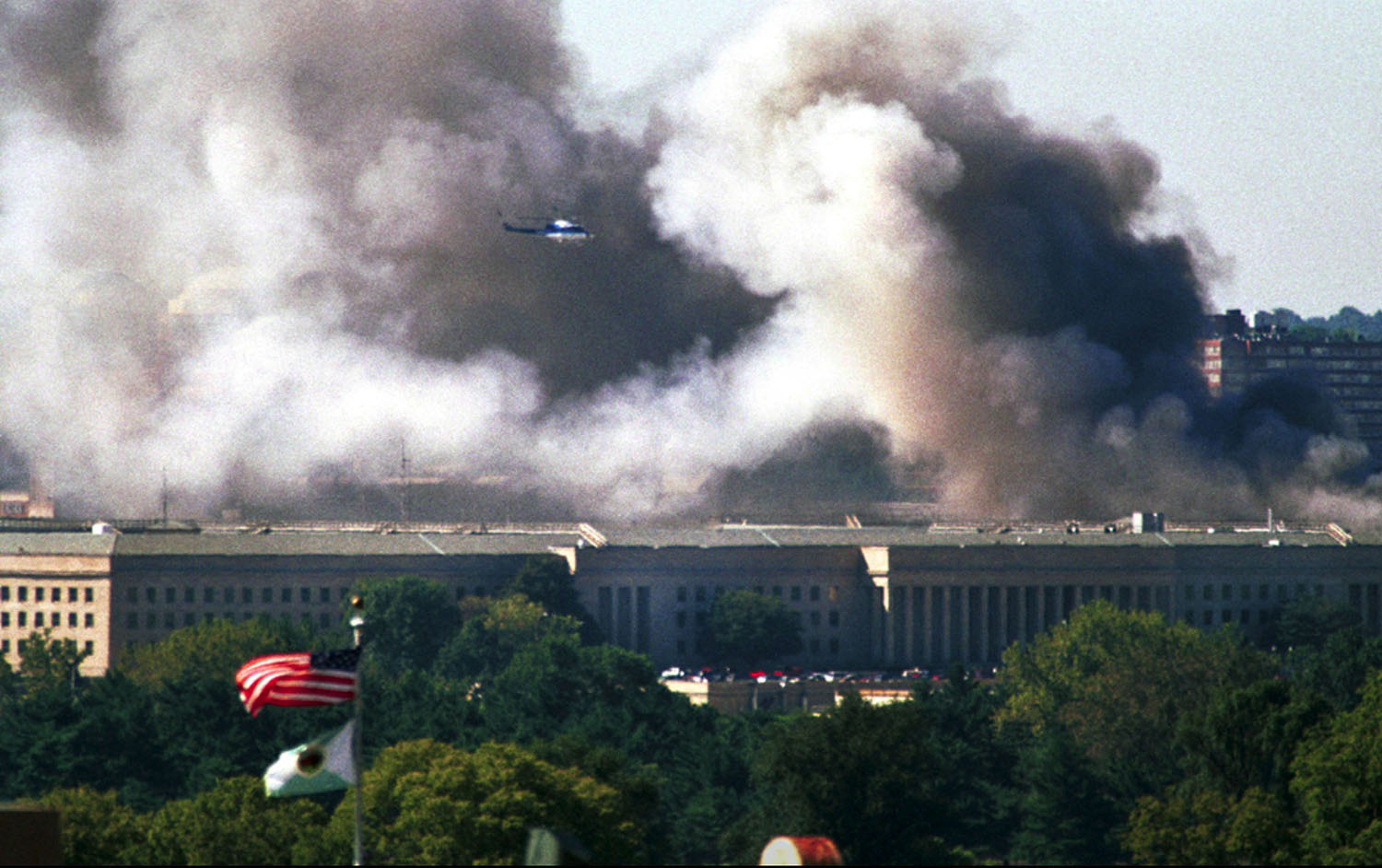
The Pentagon is on fire after being hit by American Airlines flight 77 that had been hijacked by terrorists
September 12. Early in the morning I talked to my old friend from the Ford White House days, Sec. of Defense Donald Rumsfeld, and he suggested that I ride over to the Pentagon with him. We drove to the scene where Flight 77 had hit the building. It was still dark out, and the building was lit up by a bank of lights. It was an eerie sight. Moments later Rumsfeld's security guards hustled us out because they had received another threat.
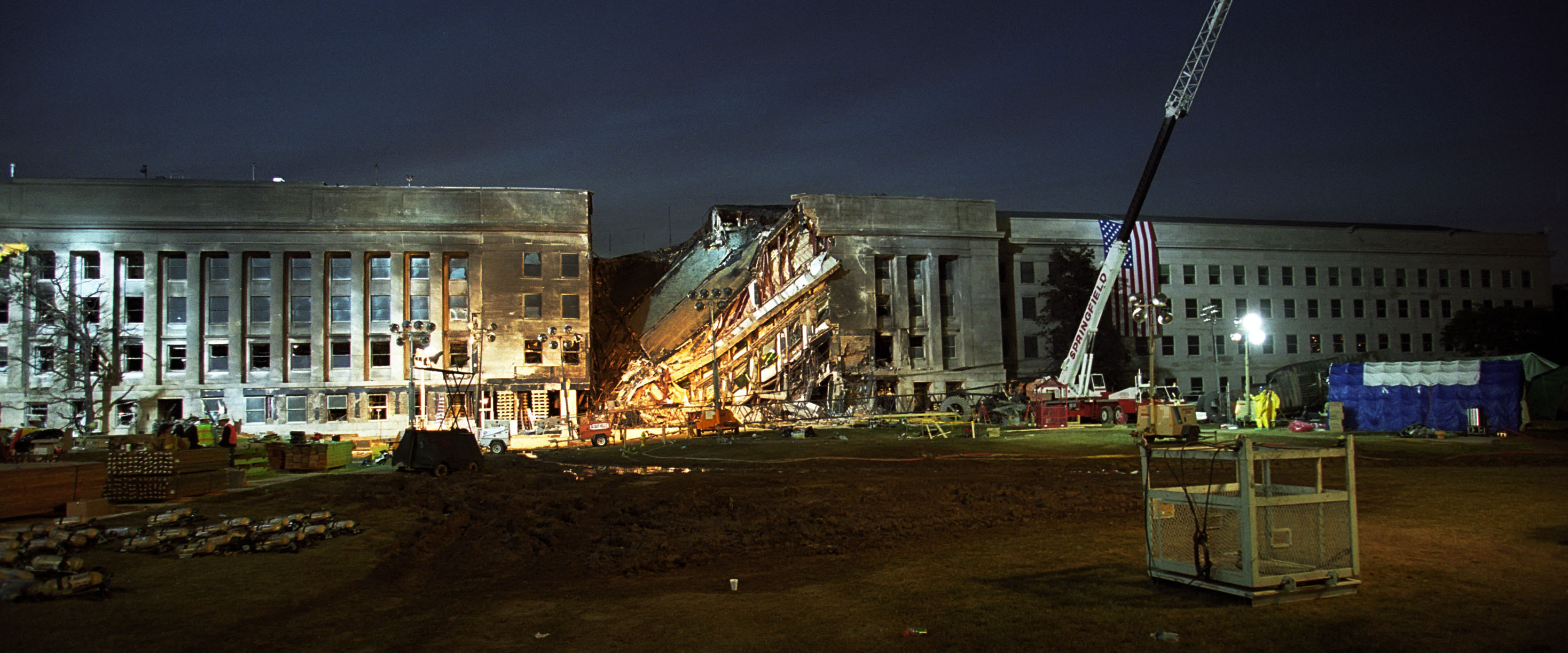
Later that day President George W. Bush and Secretary Rumsfeld surveyed the damage. I've never seen a more resolute expression on a man's face as the president turned and walked away from the scene. At that moment there was no doubt in my mind that the President and Rumsfeld were going to do something about this attack on the World Trade Center, the Pentagon, and America itself.
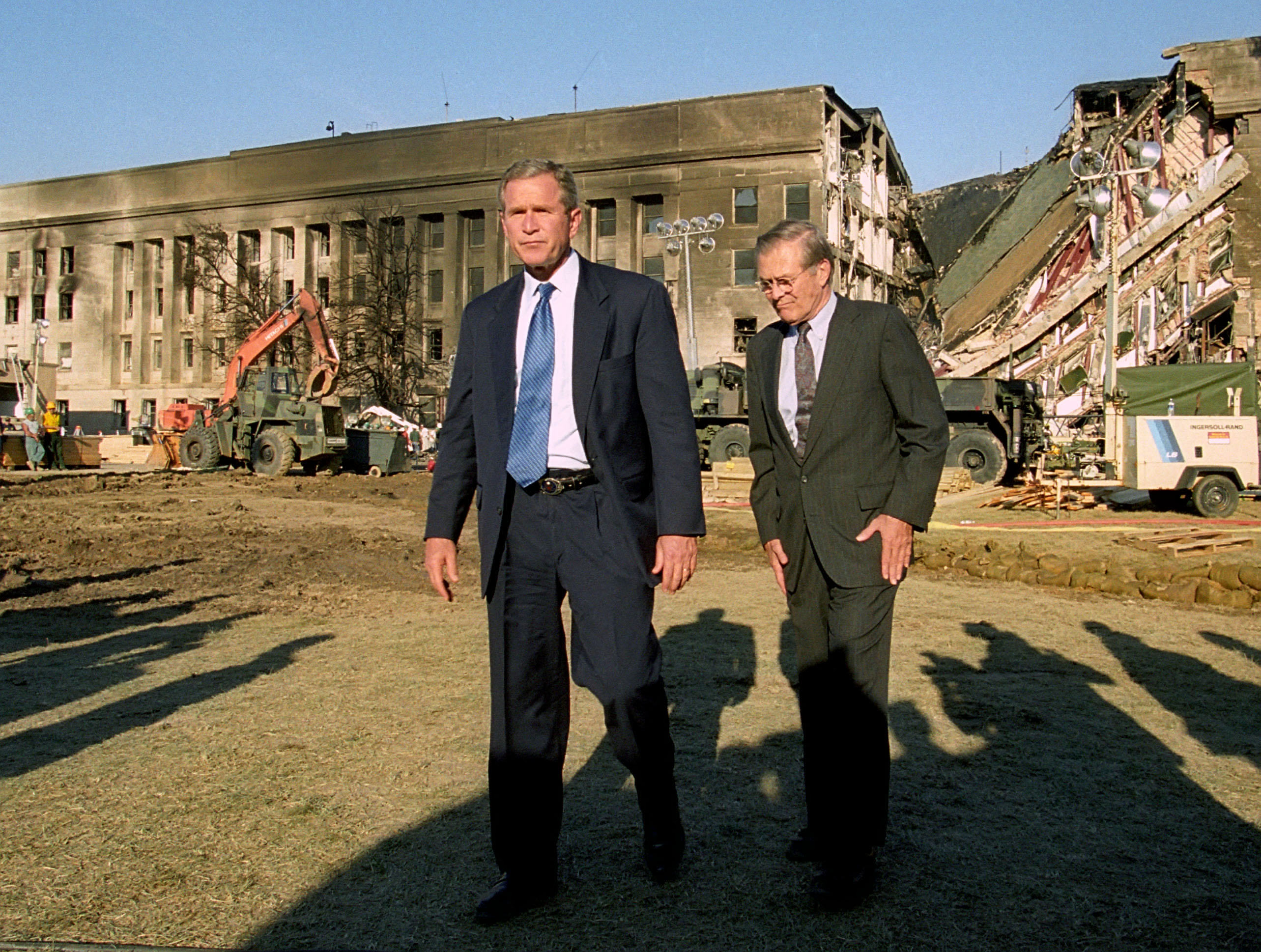
A grim President George W. Bush and Secretary of Defense Donald Rumsfeld at the scene of the attack on the Pentagon
A giant flag is unfurled by some of the firefighters who fought the blaze after the terrorist attack to greet President Bush when he arrived at the Pentagon. It was a deeply emotional moment for those who gathered there.
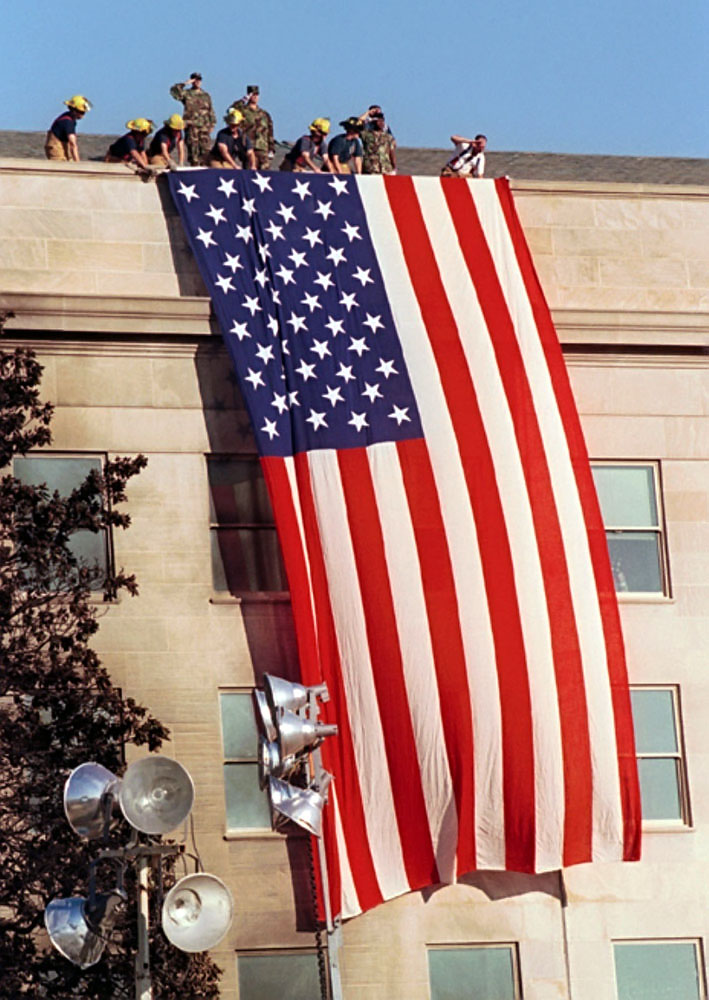
As President Bush visited the scene, a huge American flag is unfurled from the roof of the Pentagon by firefighters next to where the plane hit.
September 13. I was with Sec. Rumsfeld at the Pentagon when another threat came in. We were hustled out to his car by his security agents, and sped away. He was supposed to have a phone conversation with Secretary of State Colin Powell, but Powell suggested he just come over to the State Department instead. We were a couple of blocks away from Powell's office when Rumsfeld ordered his security guys to pull over. We stopped in front of the Federal Reserve building. "Turn around and head back to the Pentagon," he told them. He looked at me and said, "I'm just not going to let these threats keep me jumping, we're going back." I smiled, and said, "You can let me out here." He laughed, and we went back to his office at the Department of Defense. He never left the building again due to a threat.
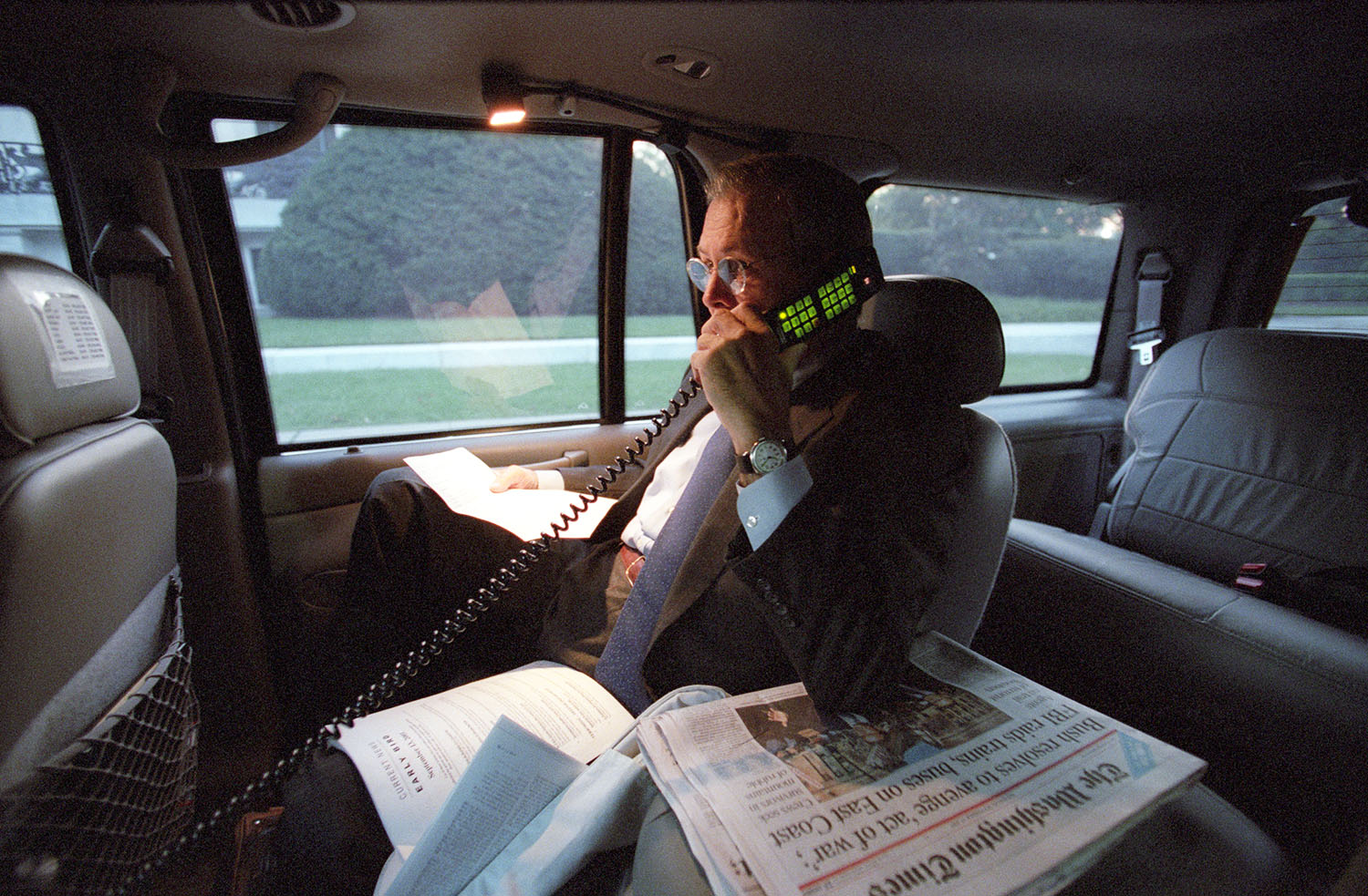
Sec. of Defense Don Rumsfeld pulls over to talk to Sec. of State Colin Powell before turning his car around to head back to the Pentagon.
I spent the next days inside the Pentagon with Don Rumsfeld, and documented him and his team as they geared up for the strike on Afghanistan. I flew with him to the Middle East before the attack, and was there with him in his office when the operation commenced. I also made several trips to Afghanistan and Iraq with him over the next few years, but that's a story for another day!
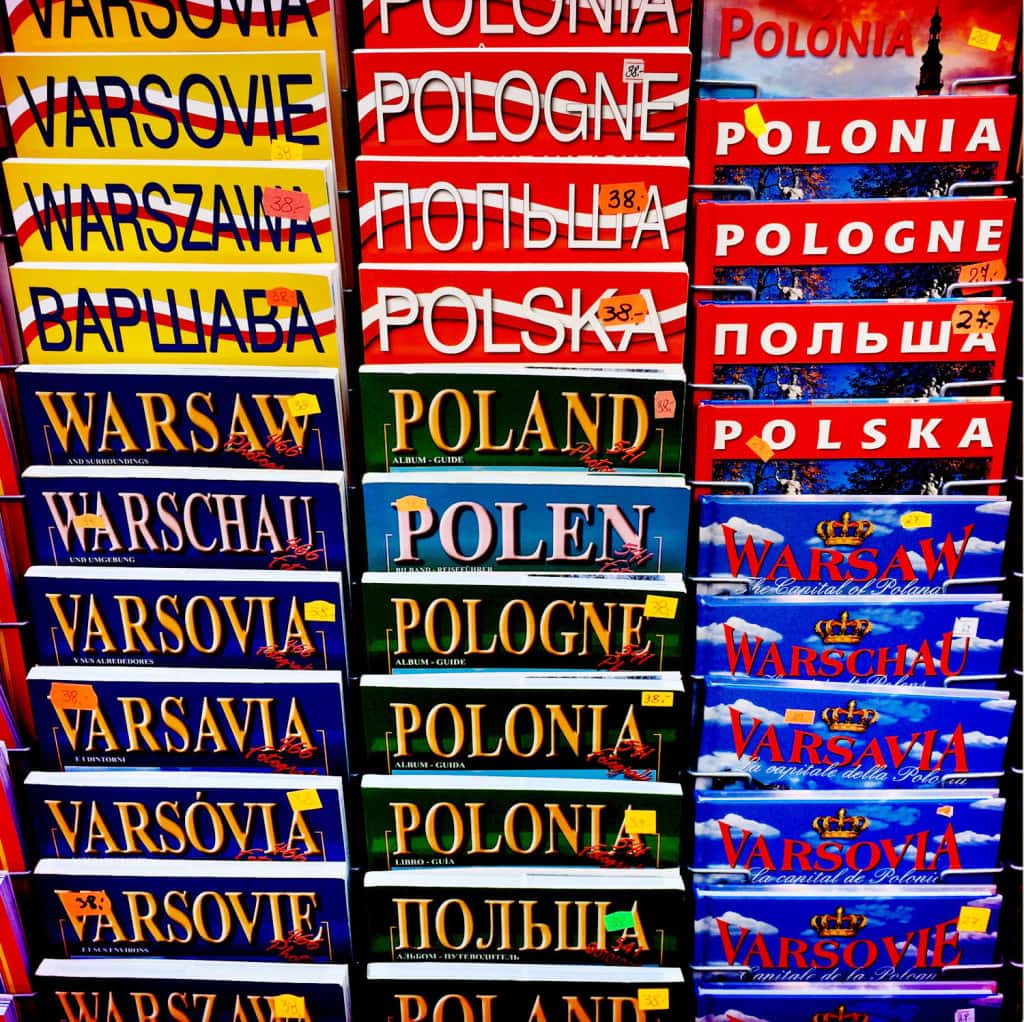
Here are some random snaps from my first full day in Warsaw. I strolled around the old city on a Saturday afternoon, a place jumping with tourists, and brides and grooms having their wedding photos taken, a local tradition. I came across a military ceremony that was honoring they fallen at the Tomb of the Unknown Soldier, the most important monument of its kind in the country. Poland suffered the most deaths per capita than any other country during WWII.
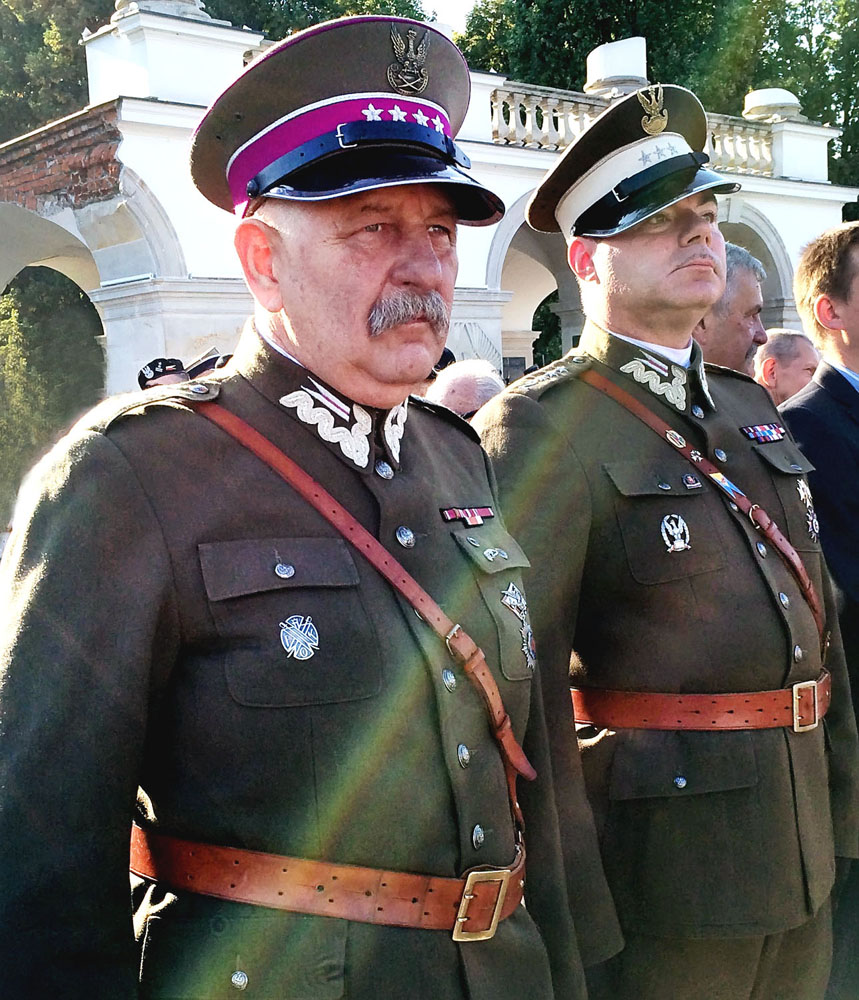
Polish generals at a ceremony honoring their fallen comrades
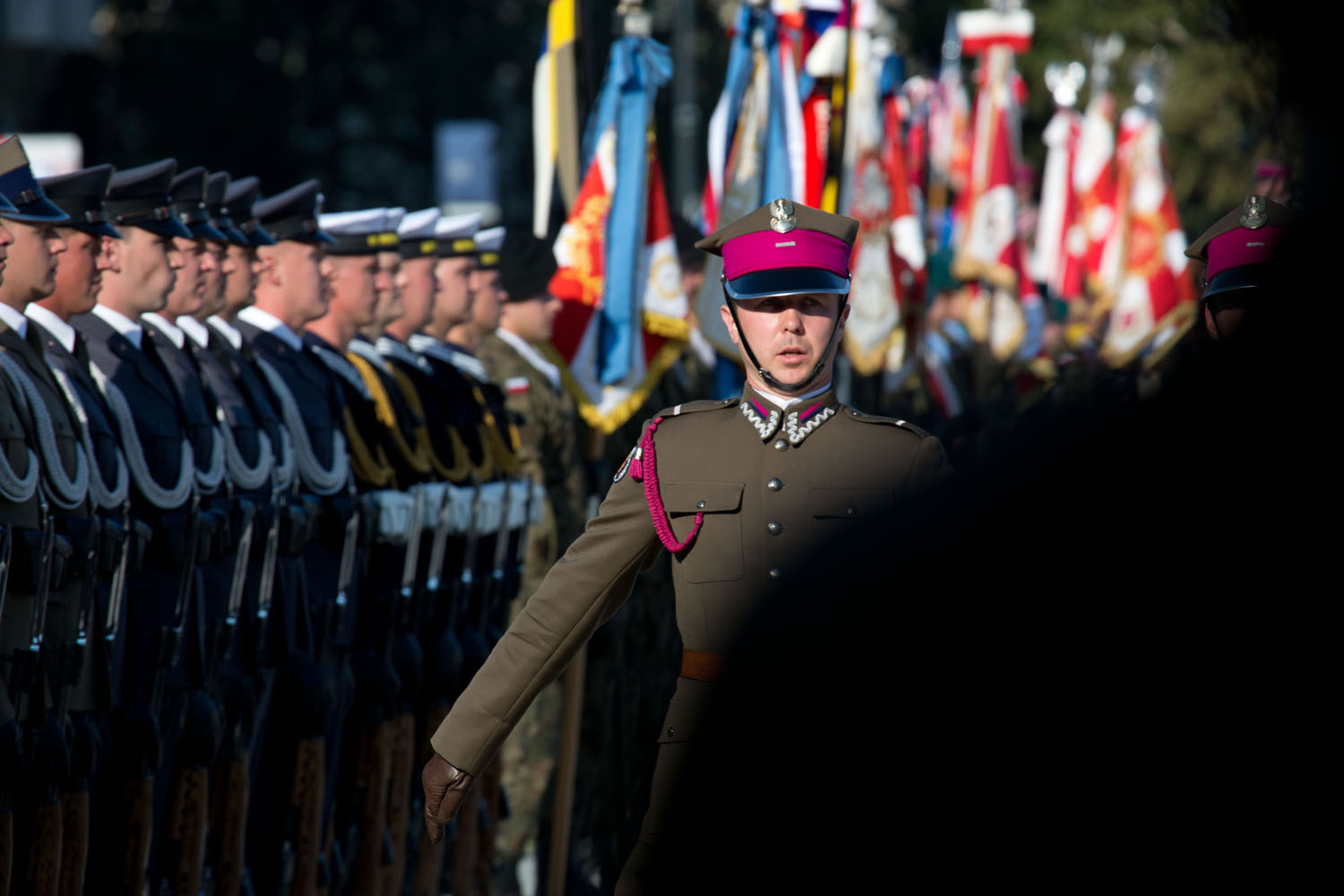
Trooping the line
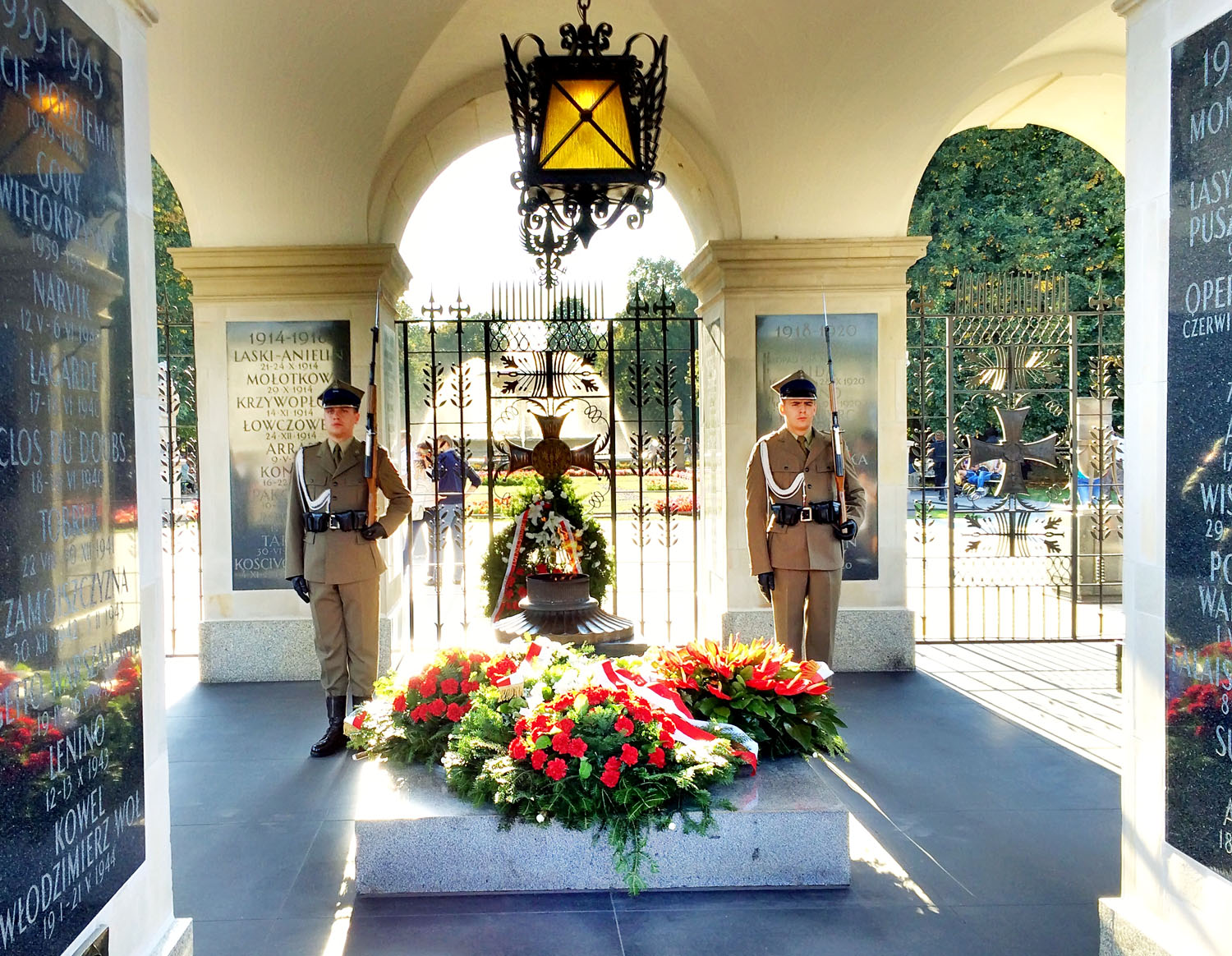
Warsaw's Tomb of the Unknown Soldier after wreath laying ceremony
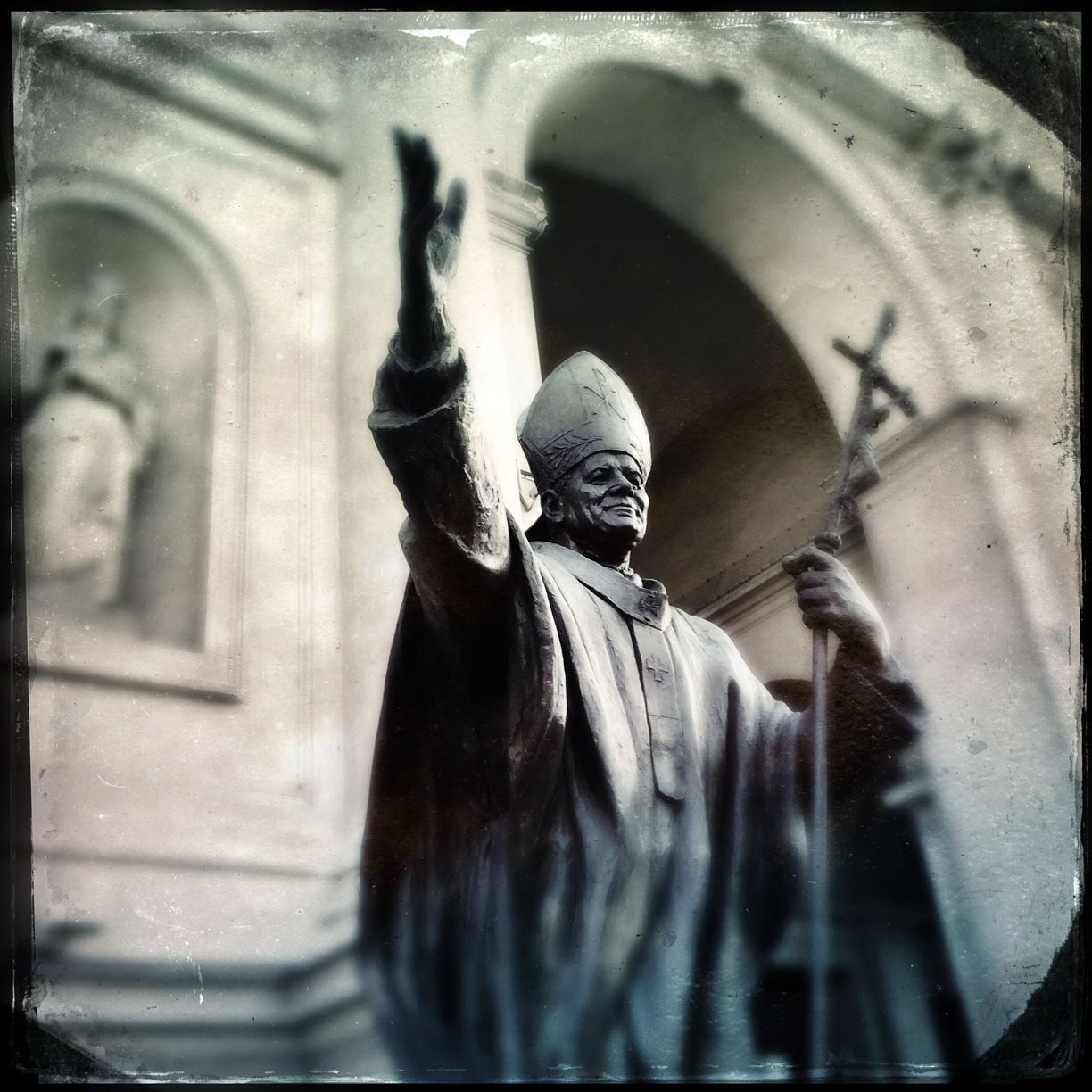
Statue of Pope John Paul II in front of Warsaw's All Saints Church
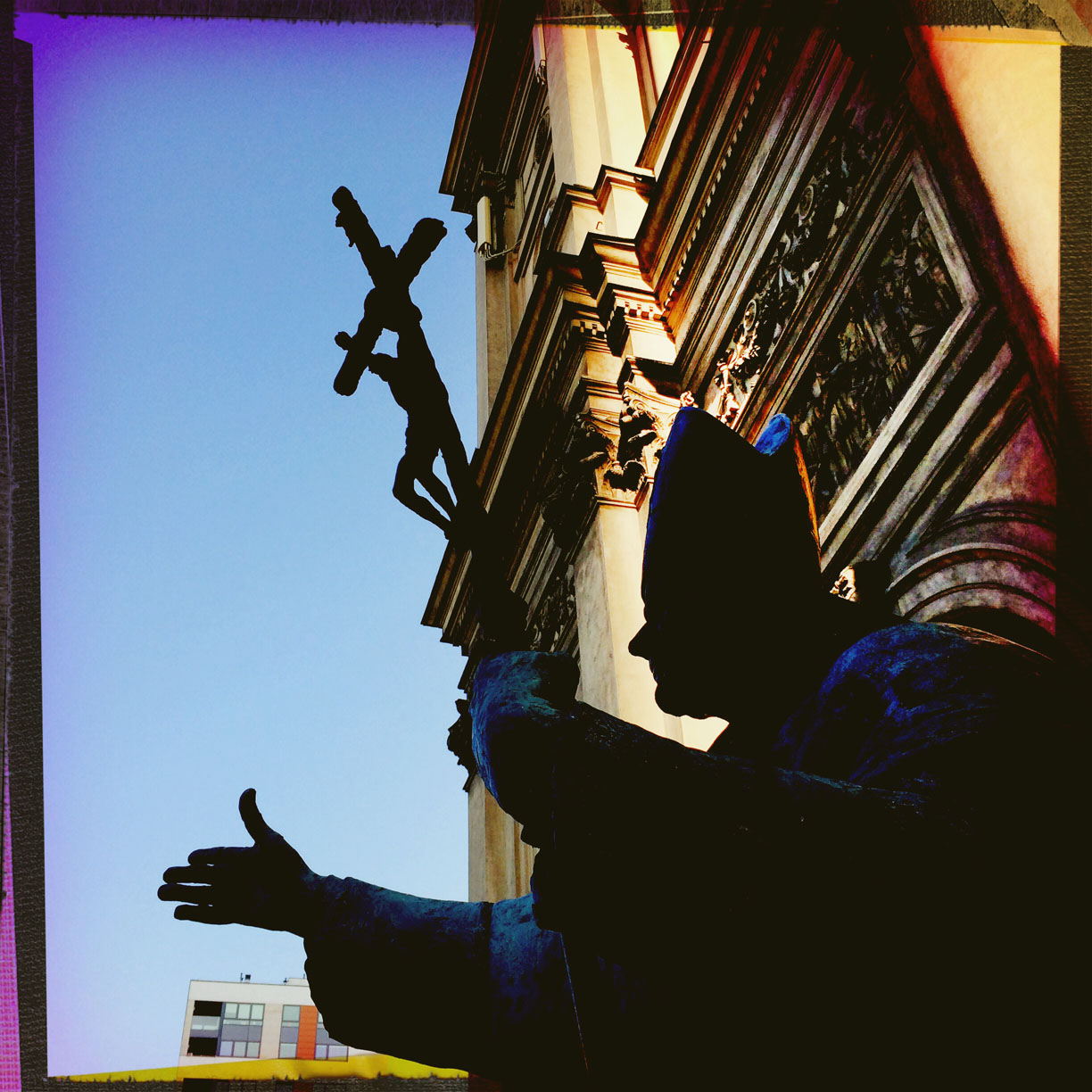
Statue of Pope Saint John Paul II, born Karol Józef Wojtyła in Poland, also known as Saint John Paul the Great
The following post contains several unpublished photos that I took of President Ford before, during, and after the pardon of Richard Nixon forty years ago today.
Sunday, September 8, 1974 started off in a fairly routine fashion for President Gerald R. Ford. He attended St. John's church just across Lafayette Square from the White House, then returned to the White House. What happened after that insured that he would not get a term in his own right as President of the United States. He pardoned Richard Nixon.

President Ford leaves St. John's church on his way back to the White House to sign the Nixon pardon.
Before he publicly announced the pardon President Ford made a series of telephone calls to inform the leaders of the House and Senate what he was going to do. He phoned, (in this order), Senate Majority Leader Mike Mansfield, Speaker of the House Carl Albert, Senate Minority Leader Hugh Scott, House Majority Leader Tip O'Neill, Attorney General William Saxbe, House Majority Whip John McFall, Vice President-designate Nelson Rockefeller, and Senator Barry Goldwater.
Head speechwriter Robert Hartmann and I were the only ones with President Ford in his private hideaway next to the oval office as he prepared to make the fateful announcement. The president sat by himself and looked over the proclamation. He didn't say anything to either of us. The decision was made, he was ready, and moments later he stood up, a look of resolution on his face, and said, "Let's go."
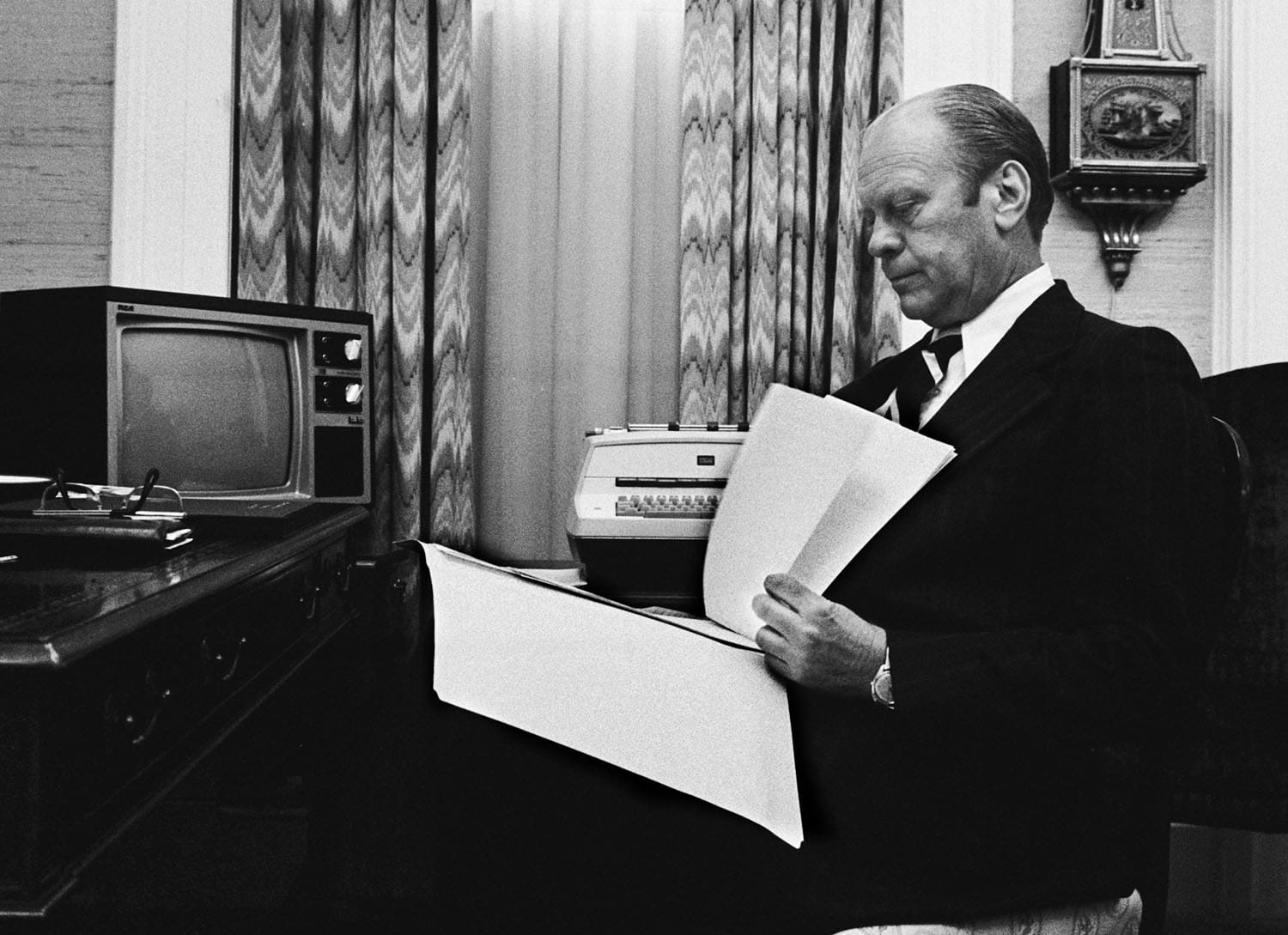
President Ford looks over Nixon pardon document in his private office before publicly signing it a few minutes later
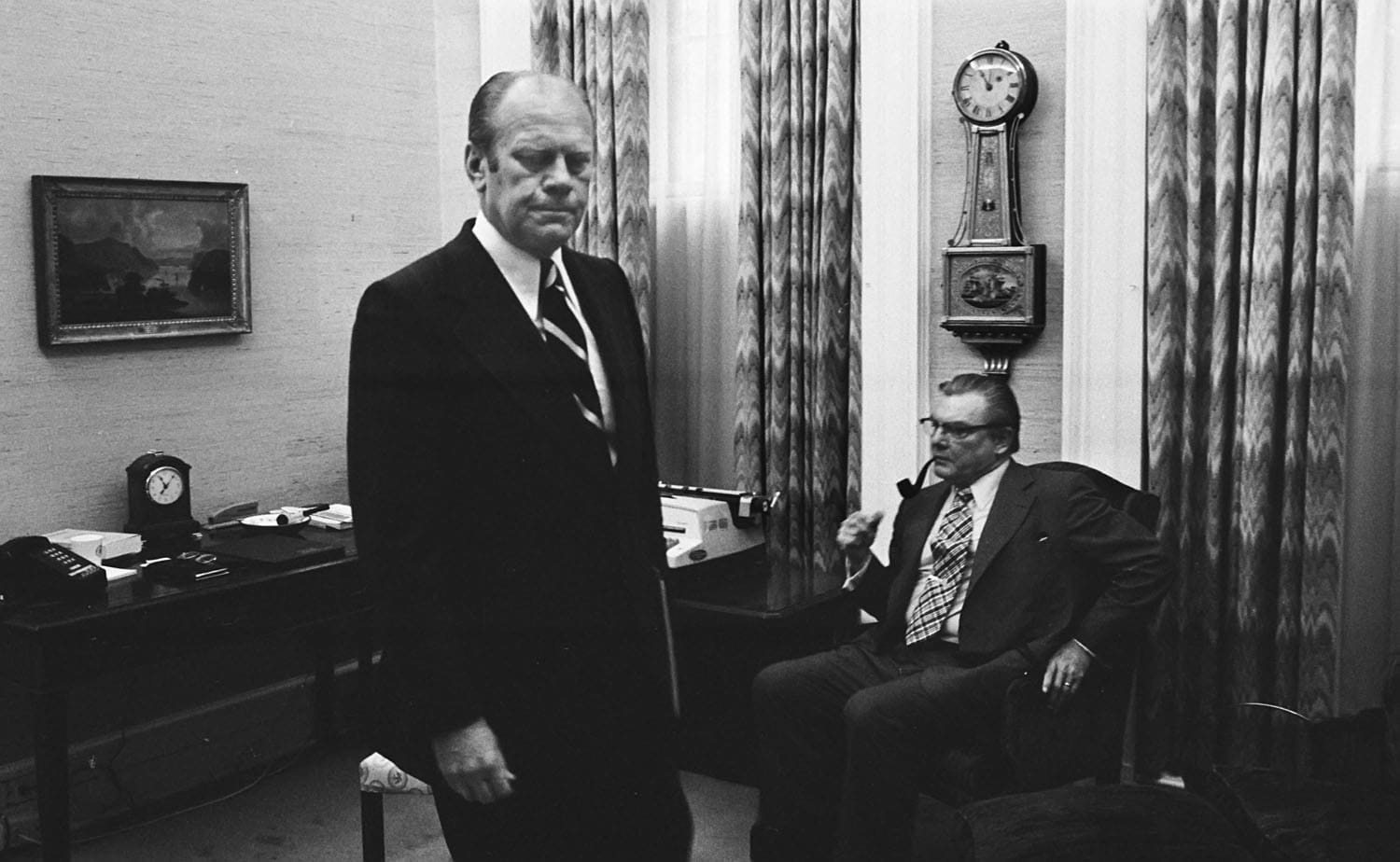
President Ford with speechwriter Robert Hartmann seconds before entering the oval office to sign the pardon of former President Nixon
At 11:16 am in the oval office, President Ford reads the announcement before signing the pardon. At the end of his talk he said,
". . . I, GERALD R. FORD, President of the United States, pursuant to the pardon power conferred upon me by Article II, Section 2, of the Constitution, have granted and by these presents do grant a full, free, and absolute pardon unto Richard Nixon for all offenses against the United States which he, Richard Nixon, has committed or may have committed or taken part in during the period from January 20, 1969 through August 9, 1974. IN WITNESS WHEREOF, I have hereunto set my hand this eighth day of September, in the year of our Lord nineteen hundred and seventy-four, and of the Independence of the United States of America the one hundred and ninety-ninth."
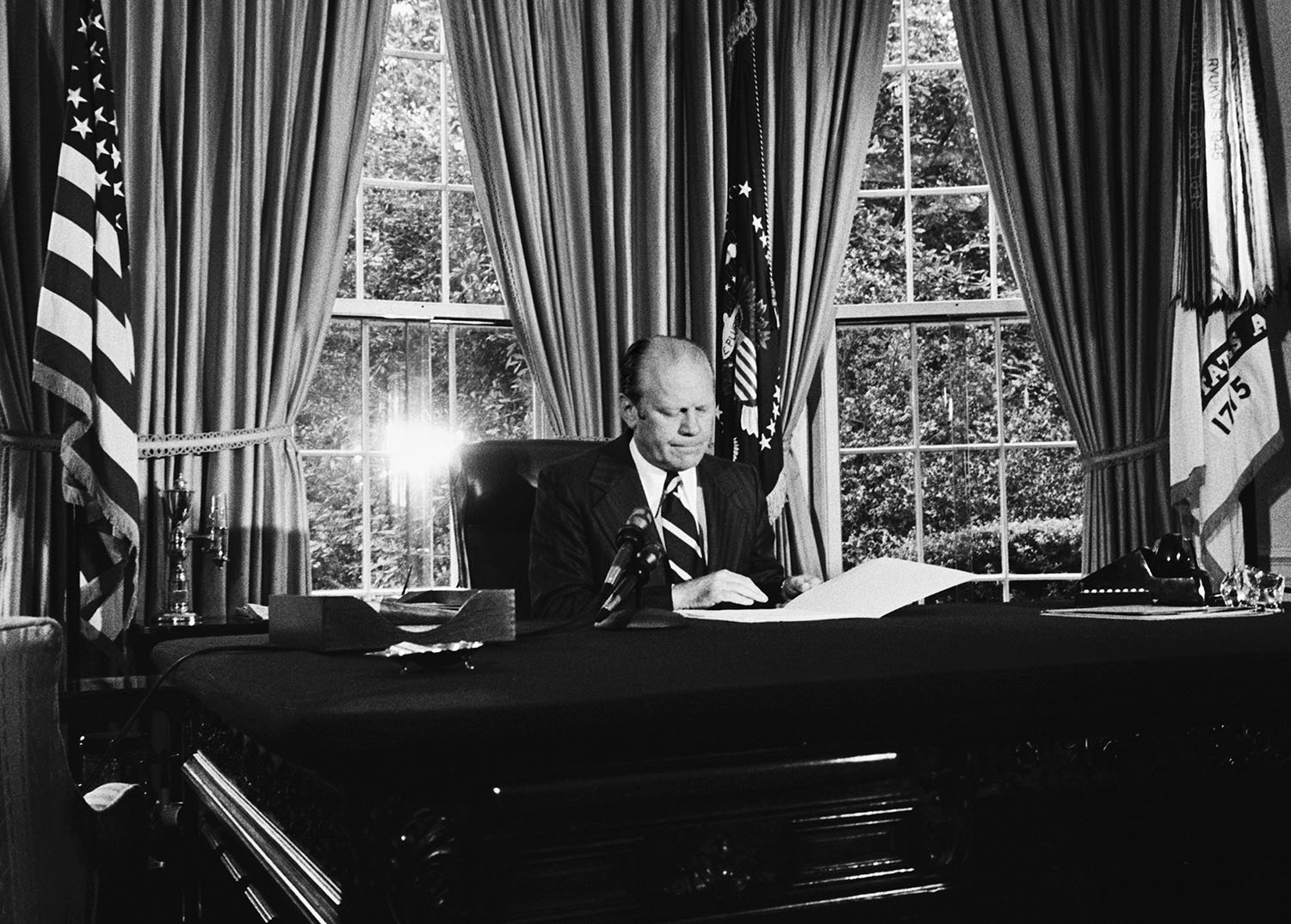
Sitting behind his desk in the oval office, President Gerald R. Ford prepares to read the text of the Nixon pardon
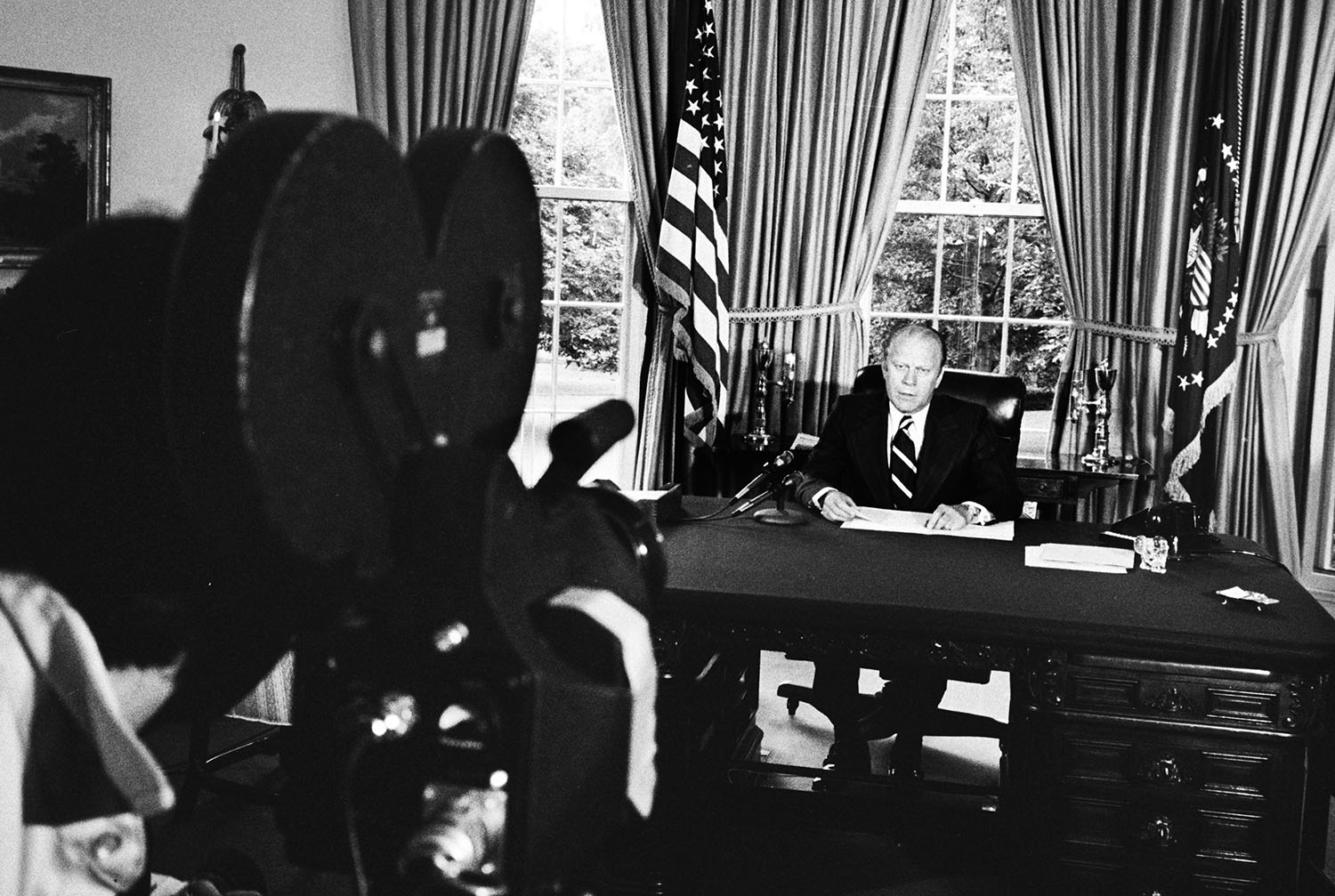
President Ford reads the text of the pardon in front of a lone television camera on Sunday morning, September 8, 1974.
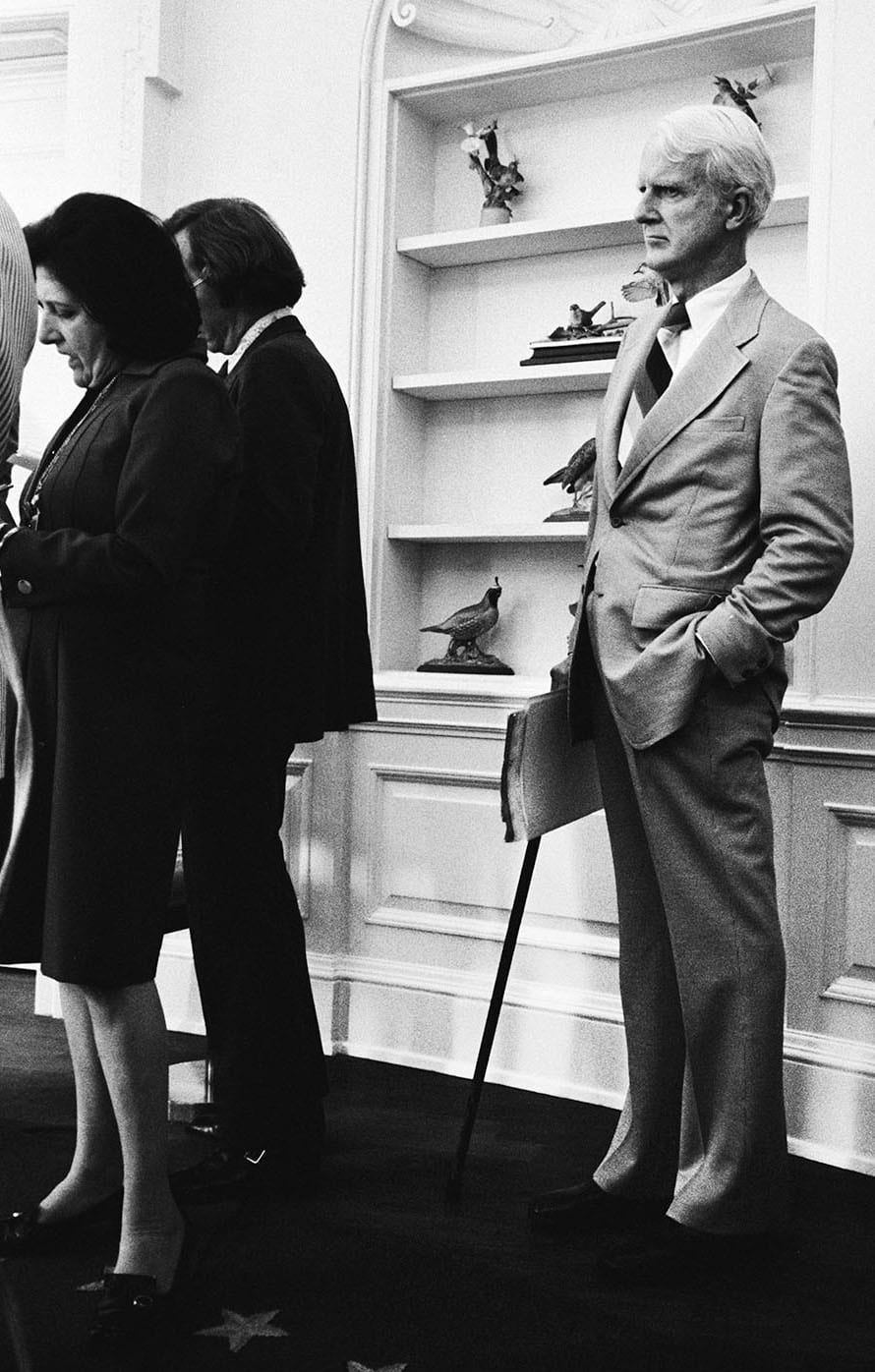
Phil Buchen, President Ford's chief legal counselor and old law partner from Grand Rapids, watches the proceedings.
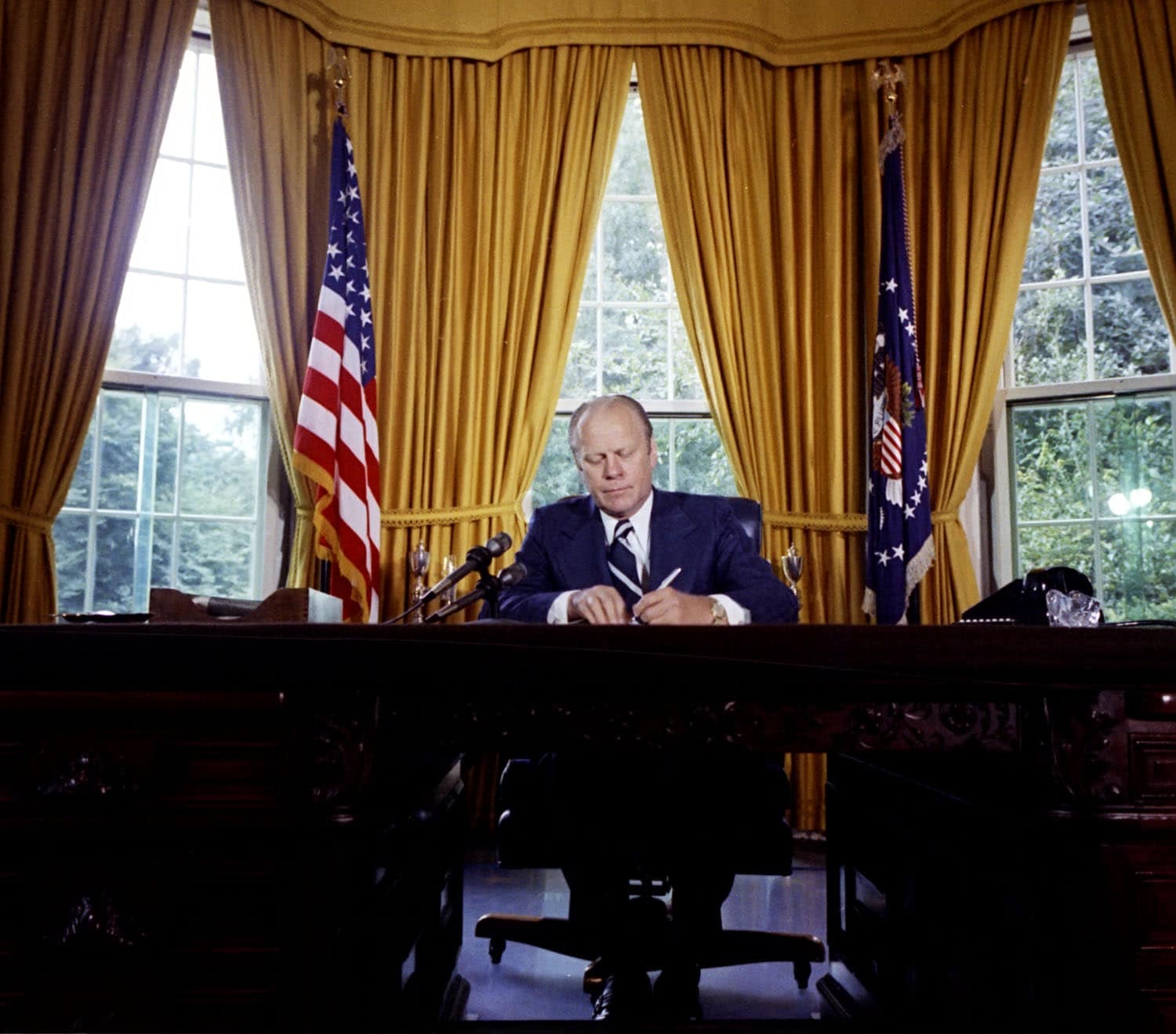
President Ford signs the paper pardoning former President Richard Nixon
(Yes, I shot this one in color...)
Moments after signing the pardon, President Ford walked down the hallway to the office of Bill Timmons who was head of legislative affairs. Timmons was there fielding calls from members of Congress about the pardon, along with Ford's (and Nixon's) chief of staff Alexander Haig, White House counselor Jack Marsh, and Hartmann. What I found shocking was that almost everyone who called in that morning privately told the president that he had done the right thing, but publicly went out and lambasted him. At that point I had quite a bit to learn about real politics. As usual President Ford took it all in stride, but definitely felt the pressure.
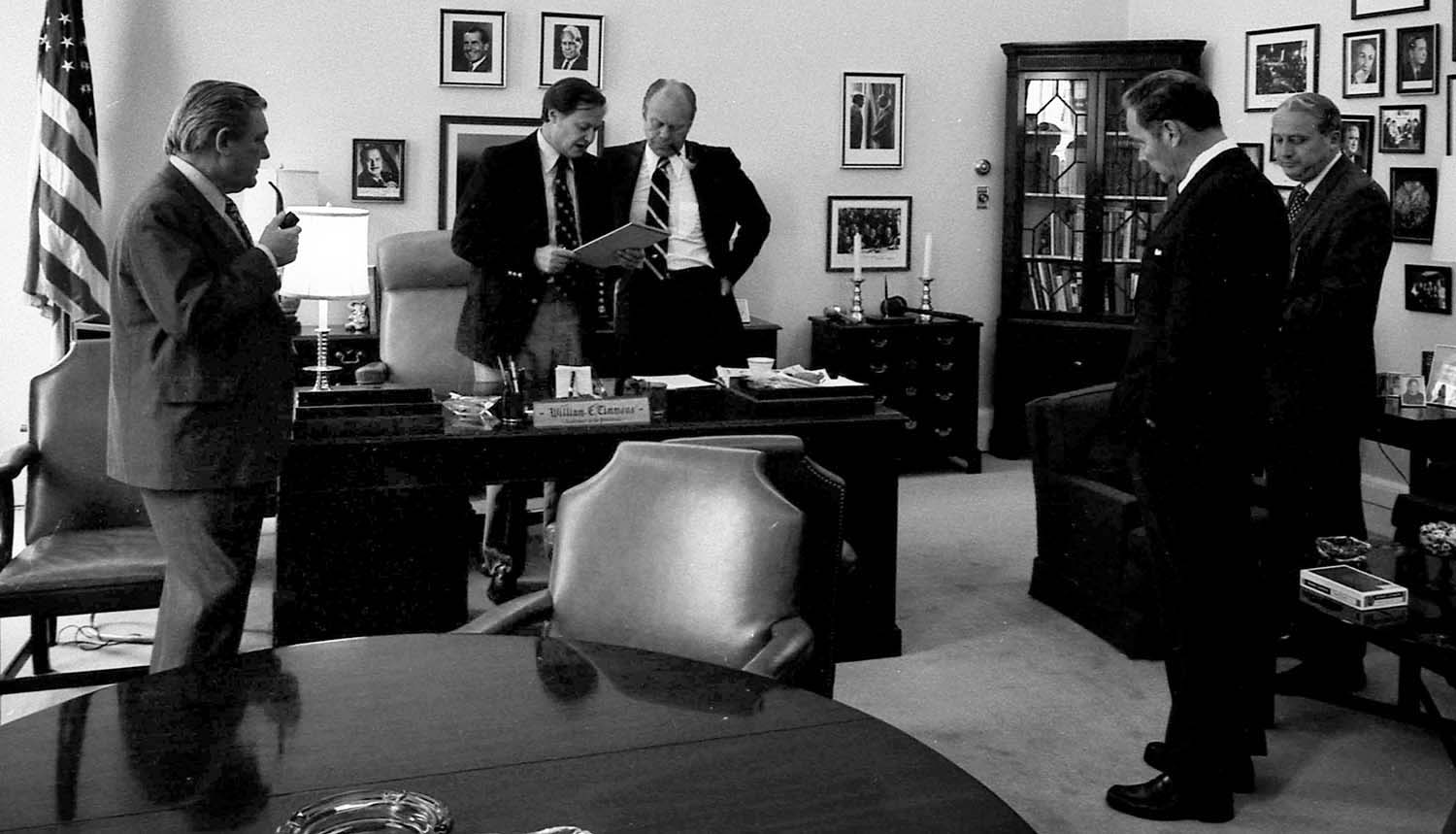
President Ford gets reaction from Congress in the office of his legislative affairs assistant. (L-R) Robert Hartmann, Bill Timmons, the President, Al Haig, Jack Marsh.
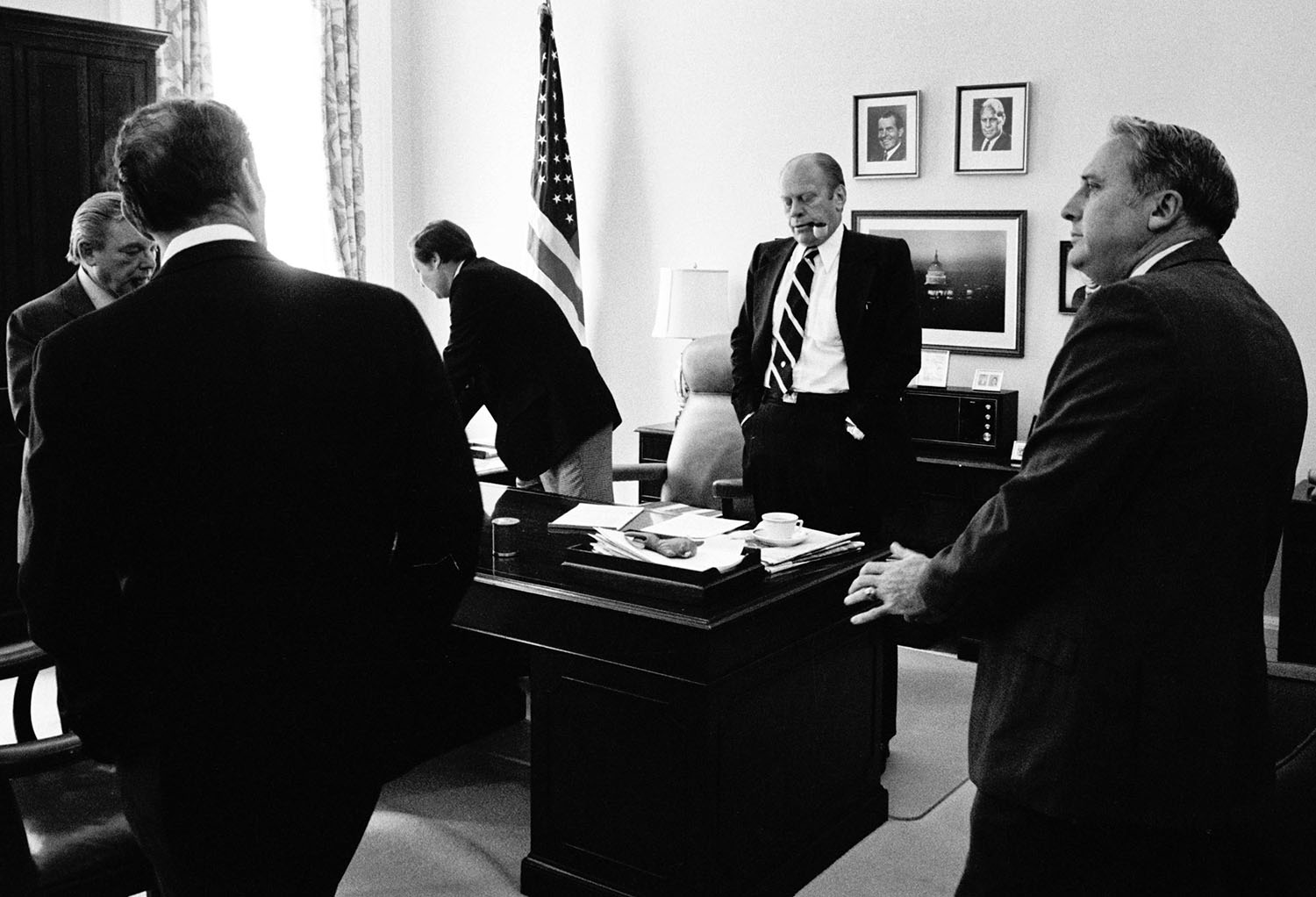
Photographing ironic moments is my strong suit, and this photo of President Ford under a picture of himself as vice president and Nixon as president minutes after the pardon is right up there in the heavy irony category.
(L-R) Bob Hartmann, Al Haig, Bill Timmons, the president, and Jack Marsh.
President Ford's approval rating plummeted from 71 to 37 after the Nixon pardon, and he wasn't able to politically recover in order to win a term in his own right. There was a lot of piling on among his fellow pols. Sen. Teddy Kennedy in a speech in Los Angeles after the pardon said, "So we operate under a system of equal justice under the law? Or is there one system for the average citizen, and another for the high and mighty." Ouch. Unfortunately that pretty well reflected what the majority of Americans thought at the time, and Ford's popularity was in the cellar.
By 2001 Senator Kennedy had changed his tune, and along with Caroline Kennedy presented President Ford with the JFK Profile in Courage Award.”‹ The award was created in 1989 by members of President Kennedy's family to honor the fallen president and to recognize and celebrate the quality of political courage that he admired most. "For the scientist, the moment is the Nobel or the Lasker; for the journalist, the Pulitzer; the actor, the Oscar. For those in government, it is the Kennedy." Governor Lowell Weicker
Sen. Kennedy said, "Unlike many of us at the time, President Ford recognized that the nation had to move forward, and could not do so if there was a continuing effort to prosecute former President Nixon. His courage and dedication to our country made it possible for us to begin the process of healing and put the tragedy of Watergate behind us."
Caroline Kennedy, now the ambassador to Japan, while presenting the award to President Ford said, "For more than a quarter century, Gerald Ford proved to the people of Michigan, the Congress, and our nation that politics can be a noble profession. As President, he made a controversial decision of conscience to pardon former president Nixon and end the national trauma of Watergate. In doing so, he placed his love of country ahead of his own political future."
President Ford told me later that the Profile in Courage Award was one of the most important things that ever happened to him. He was very emotional when he talked about it, and a tear ran down his cheek as he recounted the experience.
”‹
My first trip to Poland was July 28, 1974 as President Gerald R. Ford's White House photographer. He was the second U.S. President to visit the country, Richard Nixon was the first. Ford was given a full-on state ceremony, including a ride through the streets in an open car with Edward Gierek, First Secretary of the Polish United Workers Party, and the man in charge. The route was lined with cheering people waving Polish and American flags. It was a good photo, a scene you will never again see with a U.S. president due to tighter security.
The Poland visit was particularly memorable for me. The motorcade made an unscheduled stop, and President Ford and Gierek got out and started shaking hands with people along the parade route. I hopped out to take photos, but the two men quickly got back in their car and the motorcade took off leaving me stranded. Another limousine was slowly coming by, and I waved it down. There was an older woman sitting alone in the back who looked friendly enough, a guy driving, and another man sitting in the front next to him. I got in the back with her, introduced myself, and thanked her for the lift. She spoke a little English, introduced herself, and to the man in the front. "This is my husband, Piotr Jaroszewicz, President of Poland," she said. He turned and gave me a little wave. Uh oh. I just committed a major security breach. Sure enough, I looked behind us, and there was a follow-up car filled with really pissed-off looking Polish secret service guys. As soon as we stopped, I quickly thanked her for the ride, and made it back unscathed to the U.S. side.
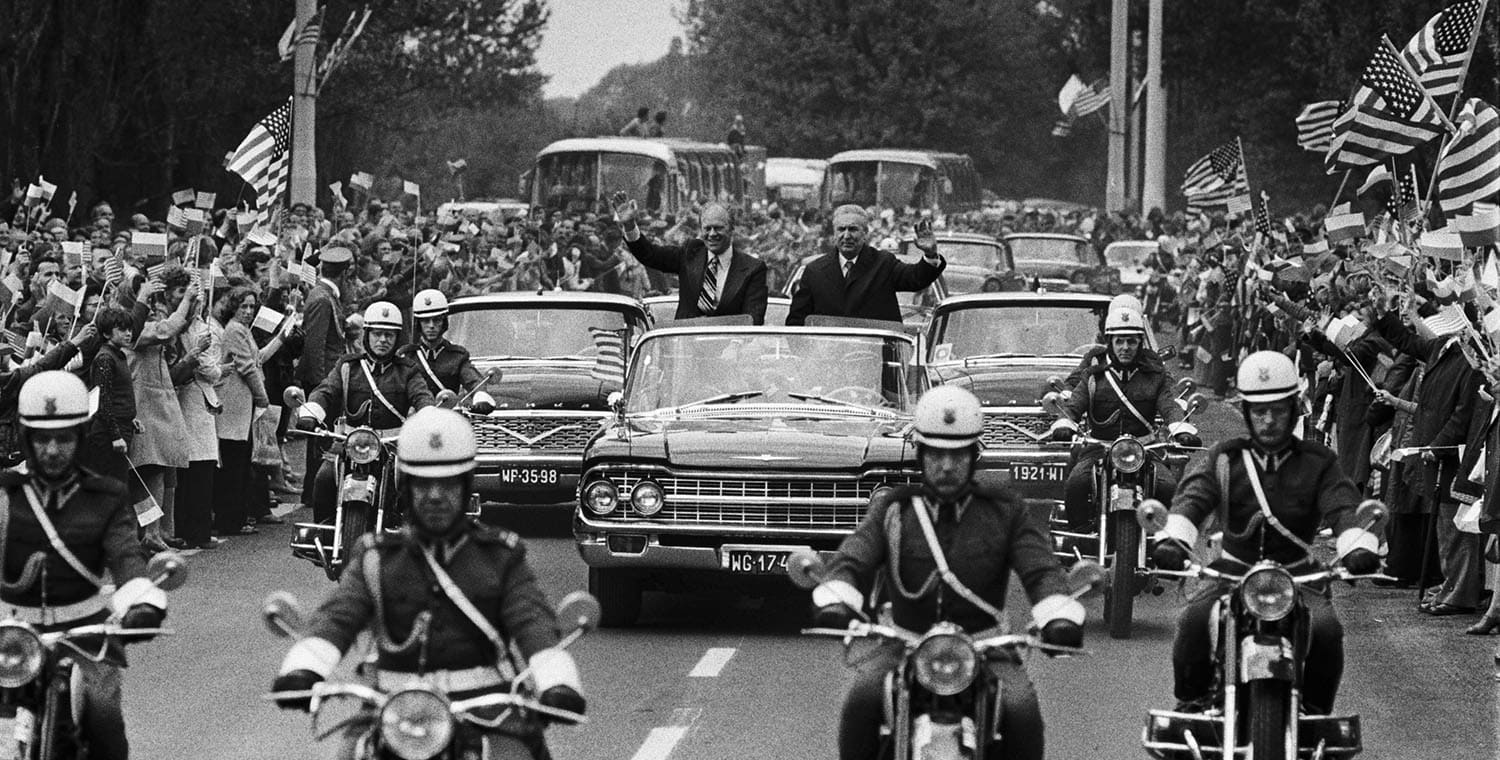
U.S. President Gerald R. Ford and Polish leader Edward Gierek in an open motorcade in Warsaw, July 28, 1975.
This latest landing in Warsaw was way more uneventful. I flew in from Munich after a non-stop flight to Germany on Lufthansa from the states. The reason for the trip was to photograph another gathering of the Global Ambassadors Program, a Vital Voices and Bank of America partnership designed to provide mentorship opportunities for emerging women leaders around the world. Previous trips to document this excellent program have taken me to Haiti, India, Indonesia, Singapore, Brazil, and Northern Ireland.
A bit of advice an old-timer gave me that I always follow is to get out and shoot right away when you visit someplace you've never been. He was right. Nothing is more exciting and fresher than new sights, and even though I'd been here four decades earlier, those memories are pretty dim. The landscape in Warsaw is dominated by a huge building that was a gift of the Soviets to the Polish people in 1955, (even though the Poles had to pay for it). It was originally called the Joseph Stalin Palace of Culture & Science, but Joe's name was dropped way back. Many people around Warsaw resent the monstrous edifice, and as some are prone to say, the best view of Warsaw where you don't see it is from the building itself. As a long-time connoisseur of commie kitsch, I love it! The day I landed in Warsaw I set out to take several views of the place. It was late afternoon, the light was great, and my mission was clear. Day 1 in Warsaw would, even though it was a short one, would be about getting some different views of Uncle Joe's Palace.
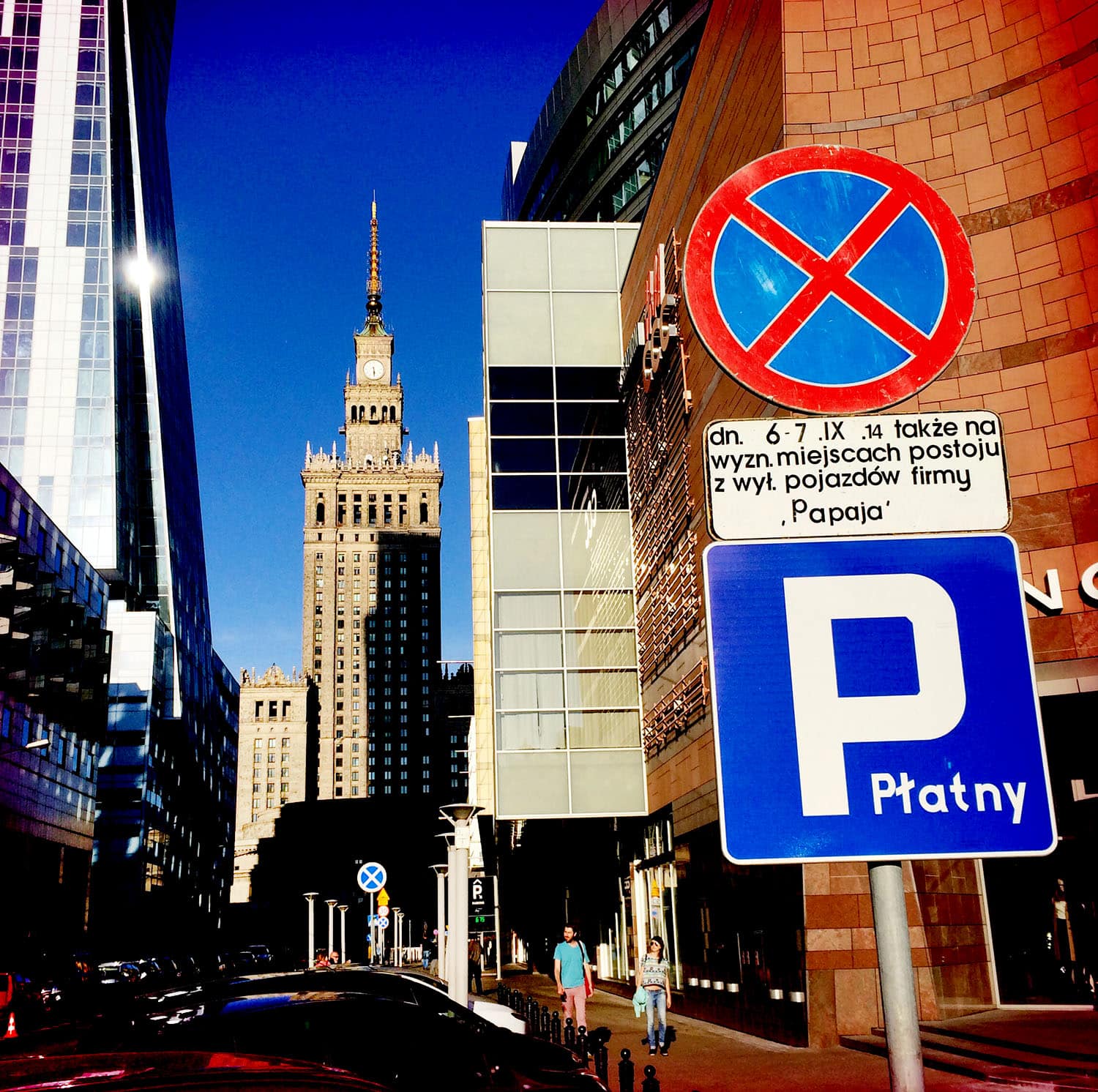
A view of the Palace of Culture & Science from down the street. The modern buildings make the 50's structure look out of place.
There were other things to see around the hotel, this movie poster among them. I always like to capture local contemporary color, or in this case, local black and white!